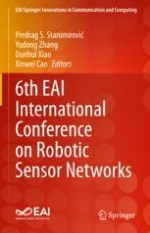This book presents the proceedings of the 6th EAI International Conference on Robotics and Networks 2022 (ROSENET 2022). The conference explores the integration of networks and robotic technologies, which has become a topic of increasing interest for both researchers and developers from academic fields and industries worldwide. The authors posit that big networks will be the main approach to the next generation of robotic research, with the explosive number of networks models and increasing computational power of computers significantly extending the number of potential applications for robotic technologies while also bringing new challenges to the networking community. The conference provided a platform for researchers to share up-to-date scientific achievements in this field. The conference took place at Swansea University, Wales, Great Britain.
